In the southern part of the West Siberian Plain, in the interfluve of the Irtysh and Ishim, Lake Ik is located. To be precise, it is located in the Krutinsky district of the Omsk region. It is part of the Great Krutin Lakes system, which in addition to it also includes the reservoirs of Saltaim and Tenis.
Description
Lake Ik has an almost regular round shape, which is distorted only by the light stretching of the shores from the southwest to northeast. The length of the lake is almost 12 km, and its width is more than 8 km, the total length of the coastline stretches for 22 km. The area of the water mirror exceeds 71 square meters. km, and the total catchment area is 1190 km sq.
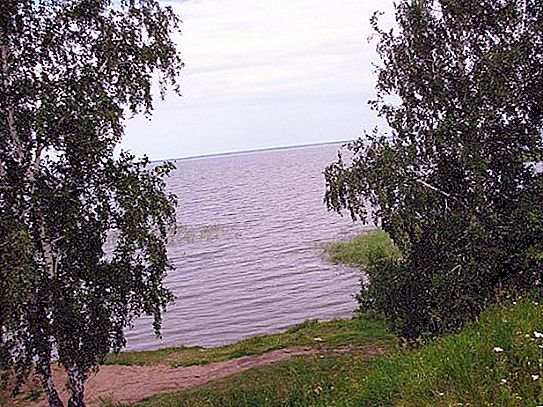
The lake lies in a deep hollow, the slopes of which are rather convex, and in some places even round. Basically, the coast is gentle, only in some places steep ledges 4-5 m high make it difficult to approach the water. And near the village of Kiterma, the hills rise to 6 m.
The coastline is almost naked for many kilometers, which is explained by the poverty of the soil and its active drainage. Only in places there is a stunted stunted vegetation (although the southeastern outskirts of the lake are overgrown with reeds), and trees are generally rare here. As a result, constant winds in a southwesterly direction gradually but inexorably destroy the eastern and northeastern shores of the lake. Abrasion is also promoted by high waves during bad weather.
Lake Ik in the Omsk region has a flat but silty bottom. Its depth increases smoothly, reaching its maximum towards the middle of the reservoir. After a mark of 4.75 meters in the very center of the lake, the depth again gradually decreases. Thus, the central part of the reservoir is like the top of an inverted cone.
Dirt map of the lake
The soils of this object are not very diverse. The characteristic of the soil composition is as follows:
- sandy-silty soil - distributed mainly in the coastal strip at a distance of 200-250 meters. Has a slight smell of hydrogen sulfide;
- dark brown silt with various remains of vegetation - found mainly in the western part of the lake at a depth of 2 meters;
- gray-green silt - covers the entire central part of the reservoir at a depth of 3.5 to 4.5 meters;
- clay silt with sand - prevails on the eastern side of the lake.
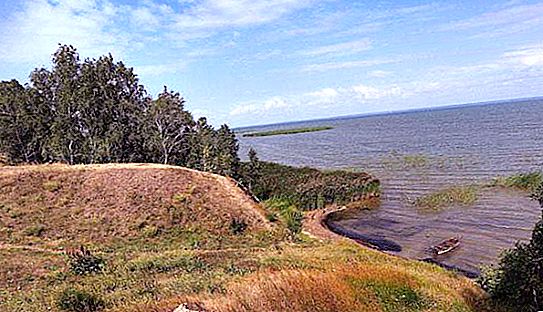
Water resources
The transparency of the lake fluctuates at the level of 0.50-0.75 m. Light penetrates especially weakly through the water column in the second half of July, when the pond blooms profusely. In the remaining months, flowering is very slight.
Mineralization of water is weak. Oxygen saturation peaks in the summer months, but drops significantly by winter.
The lake feeds mainly due to tributaries - the Yaman River (flows into the southwestern part) and Krutinki (flows into the southern part). At the same time, a significant proportion of the water collection falls on Yaman, since the mouth of Krutinka is very silty, and in dry years the flow of water is very small. Also, the water level in the lake rises due to precipitation: snow, rain.
Only one river flows from the lake - Kiterma, which connects Ik with Saltaim with a thin thread. In Soviet times, a peasant-type dam was built at the source of Kiterma, the task of which is to maintain the water horizon in the lake.
Climate
Lake Ik in the Omsk region lies in a zone of sharply continental climate. Weather conditions in this region are quite severe: cold winters with an average annual temperature of -19 degrees, short summers with a temperature regime of +18 … +22 degrees, fleeting spring and autumn. In winter and in the off-season, the waters of the lake are chained with ice, which is opened only in mid-May.
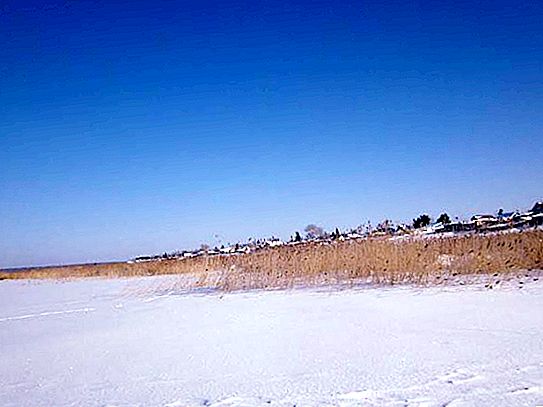
The average rainfall over the past 50 years has been at a level of 310-540 mm.
Brief historical background
Large Krutin lakes in Western Siberia formed in the Quaternary. The glacier advancing from the north “pressed” the Ob-Irtysh basin river. The mouths under pressure united, and as a result, a huge fresh sea was formed. After a couple of thousand years due to evaporation, the sea was divided into several large lakes. These lakes continued to evaporate, eventually breaking up into even smaller bodies of water. So Lake Ik was formed.
Over the years (we are talking about thousands of years), the banks changed shape, the degree of mineralization of water fell, and rich bottom sediments accumulated at the bottom. As a result, the lake acquired a modern look and chemical composition of water.
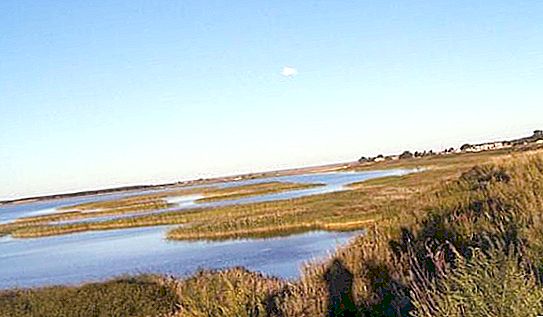
All reservoirs in Western Siberia, including those located in the Omsk Region, are characterized by cyclical changes in water level, consisting in the alternation of low and high water periods. The total duration of the cycle is 55-60 years, while the duration of the low-water and high-water periods is not too different and is accordingly 25-30 years.
For Lake Ik, according to observations, the highest water period was observed in 1917-1920, after which there was a dry season, which lasted until 1957-1959. From the end of the 50s, a period of high water again began, while the water level reached a peak in 1971-1973, and later again began to decline.
Chemical composition of water
We continue the story about Lake Ik. Is it possible to swim in its waters? To answer this question, we will deal with the chemical composition of water.
The lake belongs to the group of slightly salted, as it contains a small amount of mineral salts dissolved in water. It has a slightly alkaline reaction, belongs to the bicarbonate class of water.
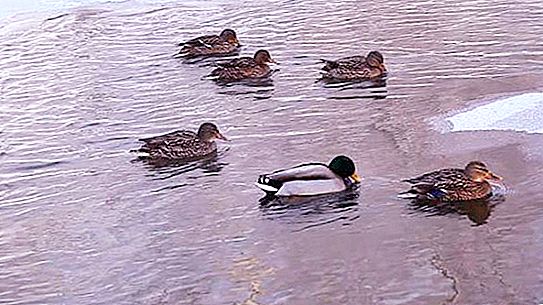
Studying the chemical composition of water, scientists came to the conclusion that it constantly contains compounds harmful to humans, such as nitrate nitrogen, ammonia nitrogen and other pollutants. Moreover, their number increases in the off-season and reaches a critical level in the winter. The reason is anthropogenic impact. Wastewater from nearby settlements, grazing on the shores of the lake, landfills - all this worsens the ecological condition of Lake Ik from year to year.
While swimming in the lake can be far from settlements, but if the state does not take control of the situation, water pollution will become global and provoke an environmental disaster in the region.
Animal and plant world
Lake Ik is known for its interesting arrangement of vegetation in the form of centric zones. The shore was captured by sedge, amphibian buckwheat, plantain, and chastuha. A cattail and reeds descend to the water itself. A few meters from the shore you can see reed beds. After a belt of vegetation was formed from different species of duckweed, hornwort, and buttercup. The water column is inhabited by more than 170 species of phytoplankton.
A variety of insects are found on the lake: swimming beetles, common ponds, dragonflies, in the summer there are many mosquitoes and midges. The muskrat settled nearby. The avifauna is represented by ducks, geese, waders. Here lives the northernmost colony of curly pelicans, whom the locals for some reason call a woman.

On the Big Krutinsky lakes, including Lake Ik, a sea cormorant nests, which is rather unusual.
What attracts tourists to Lake Ik in the Omsk region? Rest in these parts is mainly connected with fishing and hunting for waterfowl. For this, guests come to Krutinka even from Moscow. We will tell you more about fishing, because in these places it has characteristic features.
Lake Ik, Omsk Region: fishing
Fishing in the Omsk region is mainly based on Krutinsky lakes, among them Ik is the most productive. The reservoir is home to more than 10 species of fish. There are a large number of crucians, ides, carps, pikes, perches, silver carp, whitefish cheeses, breams and chebaki.
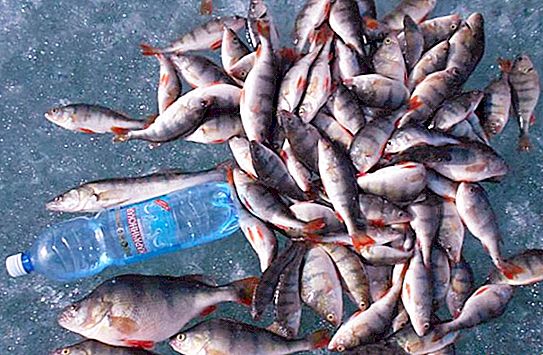
In summer, fishermen successfully fish from the shore and from boats, while the average catch ranges from 40 kg. But the fun begins in winter. Already at the end of November fishermen break holes in the places lured since autumn. Later, a snow house no more than two meters high and without a roof is built near each hole. It perfectly protects against evil January winds, but does not interfere with the penetration of sunlight. A kind of ice "perch" is being built in the house, which is covered with a cotton mattress so that the fifth point does not freeze. A snow pantry is being built nearby, where they put the caught fish. Later, the catch is brought home by dog sledding. Here is such a noble winter fishing on Lake Ik!
Although the fishermen punch a lot of holes, they are quickly drawn in by ice, so in winter the fish often suffer from a lack of oxygen and die. The strongest kill over the past 50 years occurred in 1991, when about 120 tons of fish died.





